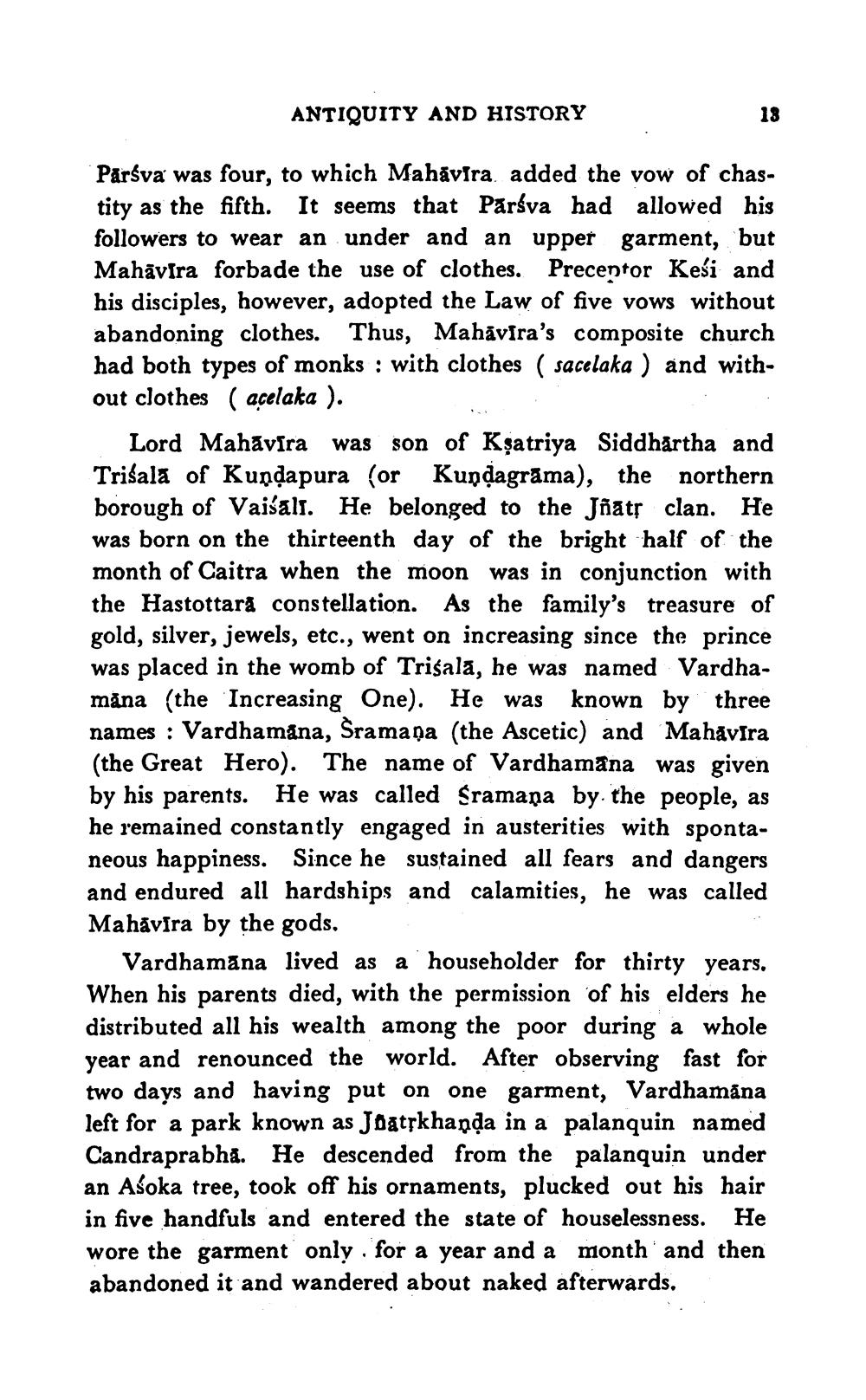________________
ANTIQUITY AND HISTORY
18
Parśva' was four, to which Mahavira added the vow of chastity as the fifth. It seems that Parśva had allowed his followers to wear an under and an upper garment, but Mahāvīra forbade the use of clothes. Preceptor Kesi and his disciples, however, adopted the Law of five vows without abandoning clothes. Thus, Mahavsra's composite church had both types of monks : with clothes ( sacelaka ) and without clothes ( acelaka ).
Lord Mahavira was son of Ksatriya Siddhartha and Trišala of Kundapura (or Kundagrāma), the northern borough of Vaišali. He belonged to the Jñats clan. He was born on the thirteenth day of the bright half of the month of Caitra when the moon was in conjunction with the Hastottara constellation. As the family's treasure of gold, silver, jewels, etc., went on increasing since the prince was placed in the womb of Trisala, he was named Vardhamāna (the Increasing One). He was known by three names : Vardhamana, Sramaņa (the Ascetic) and Mahavira (the Great Hero). The name of Vardhamana was given by his parents. He was called framana by the people, as he remained constantly engaged in austerities with spontaneous happiness. Since he sustained all fears and dangers and endured all hardships and calamities, he was called Mahāvīra by the gods.
Vardhamana lived as a householder for thirty years. When his parents died, with the permission of his elders he distributed all his wealth among the poor during a whole year and renounced the world. After observing fast for two days and having put on one garment, Vardhamana left for a park known as Joat;khanda in a palanquin named Candraprabha. He descended from the palanquin under an Asoka tree, took off his ornaments, plucked out his hair in five handfuls and entered the state of houselessness. He wore the garment only for a year and a month and then abandoned it and wandered about naked afterwards.




